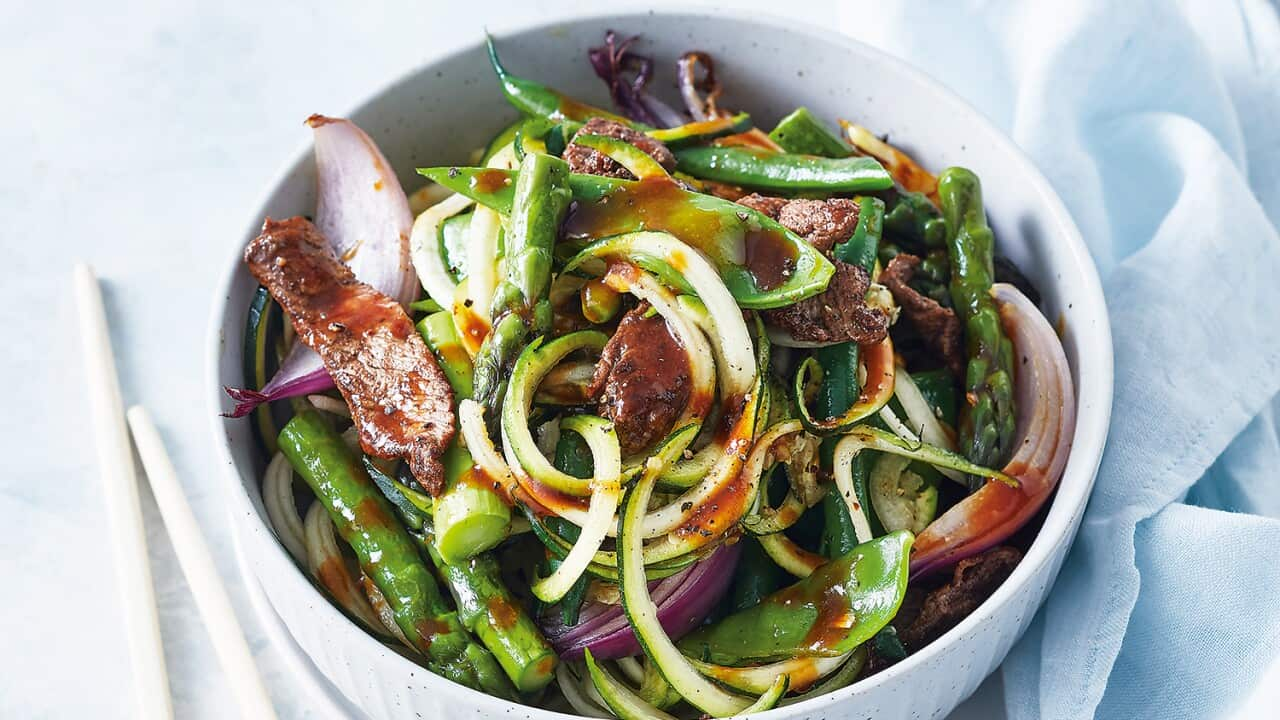has created a way to help you follow a low-carb diet, lose weight and better manage fluctuating blood sugar levels without having to eliminate delicious foods like pasta or potatoes from your diet.
The dieting solution from Australia’s national science agency, outlined in the recent book released this month, is a 12-week eating plan that’s based on a culmination of published clinical trials .
It teaches people living with type 2 diabetes, gestational diabetes, pre-diabetes and insulin resistance how to eat carbs in moderation and pair them with other foods to maximise weight loss success and glycaemic control.
The types of foods mentioned in the daily food guides can also be adjusted to suit the tastes or needs of an individual, especially if someone comes from a diverse background.
The book’s co-author, Dr Pennie Taylor, tells SBS the new eating plan also attempts to help families from culturally diverse backgrounds that face a genetic predisposition to diabetes to personalise their carb requirements.
“This diet shows people how to put foods together in a way that ensures their carbohydrates aren’t too high in one meal sitting,” says Dr Taylor, a nutritional scientist in clinical nutrition and lifestyle management at CSIRO.
The book includes 12 weeks of meal plans and daily food guides, a list of pantry staples as well as weekly shopping lists, 80 low-carb recipes and exercise tips.
“The types of foods mentioned in the daily food guides can also be adjusted to suit the tastes or needs of an individual, especially if someone comes from a diverse background.”
The low-carb diet that’s not only about carbs
Dr Taylor explains that the diet examines eating from a holistic lens and enables individuals to put together the right combination of foods to ensure their energy is released at an appropriate rate.
“When you pair protein foods with a carb, it blunts that carbohydrate release response into the blood,” she says. “Then, if you pair that carb and protein with a healthy fat, it will lower the blood glucose response again.
“So the idea behind this diet is that if you have a meal with protein, the [right amount of the right carbohydrate] and a healthy fat, it will help to lower day-to-day blood glucose variations.”
If you’re going to have a sandwich, we recommend having an open sandwich with one slice of bread that is lower in carbohydrates and high in fibre (like wholegrain or rye) and have it with an egg, tomato and cheese on top.
The diet does not demonise having an occasional indulgence like alcohol or saturated fat, or carb-rich foods like potatoes. However, it does advise eating these foods in controlled proportions. For example, starchy vegetables (potatoes and sweet potatoes) are listed in the bread and cereals category and recommended for consumption in limited amounts, according to the level of kilojoules the dieter will be eating per day.
“What we know is that if you have a sandwich, it’s traditionally two slices of bread that will give you about 30 grams of carbs. But quite often, that sandwich is not consumed with an adequate amount of protein or healthy fats.
“If you’re going to have a sandwich, we recommend having an open sandwich with one slice of bread that is lower in carbohydrates and high in fibre (like wholegrain or rye) and have it with an egg, tomato and cheese on top.”
A slow and steady lifestyle change
Around . The diabetes epidemic has been noted as one of the biggest challenges confronting Australia’s health system.
A progressive disease, type 2 diabetes affects the body’s ability to metabolise glucose (sugar) and maintain optimal blood sugar levels. Without ongoing management, potential health complications include heart disease, high blood pressure, failing eyesight, increased risk of infection and damage to vital body organs due to poor circulation.
According to the , people are at higher risk of developing type 2 diabetes if they are over 35 years old and are of Aboriginal or Torres Strait Islander background, or are from Pacific, Indian subcontinent or Chinese cultural background.
You can’t successfully change your dietary behaviours within 24 or 48 hours. It takes time.
Dr Taylor hopes that the new book and eating plan empowers people with diabetes to take back control of their health, and assists those at risk of developing the disease to prevent a blood sugar issue in the future.
“My take-home message is that this dietary and lifestyle solution should be slow and steady,” she says.
“You can’t successfully change your dietary behaviours within 24 or 48 hours. It takes time.
“Following this diet for 12 weeks is a good start. But as the diet is nutritionally complete, it is also an eating plan that can be sustained in the long term.”







